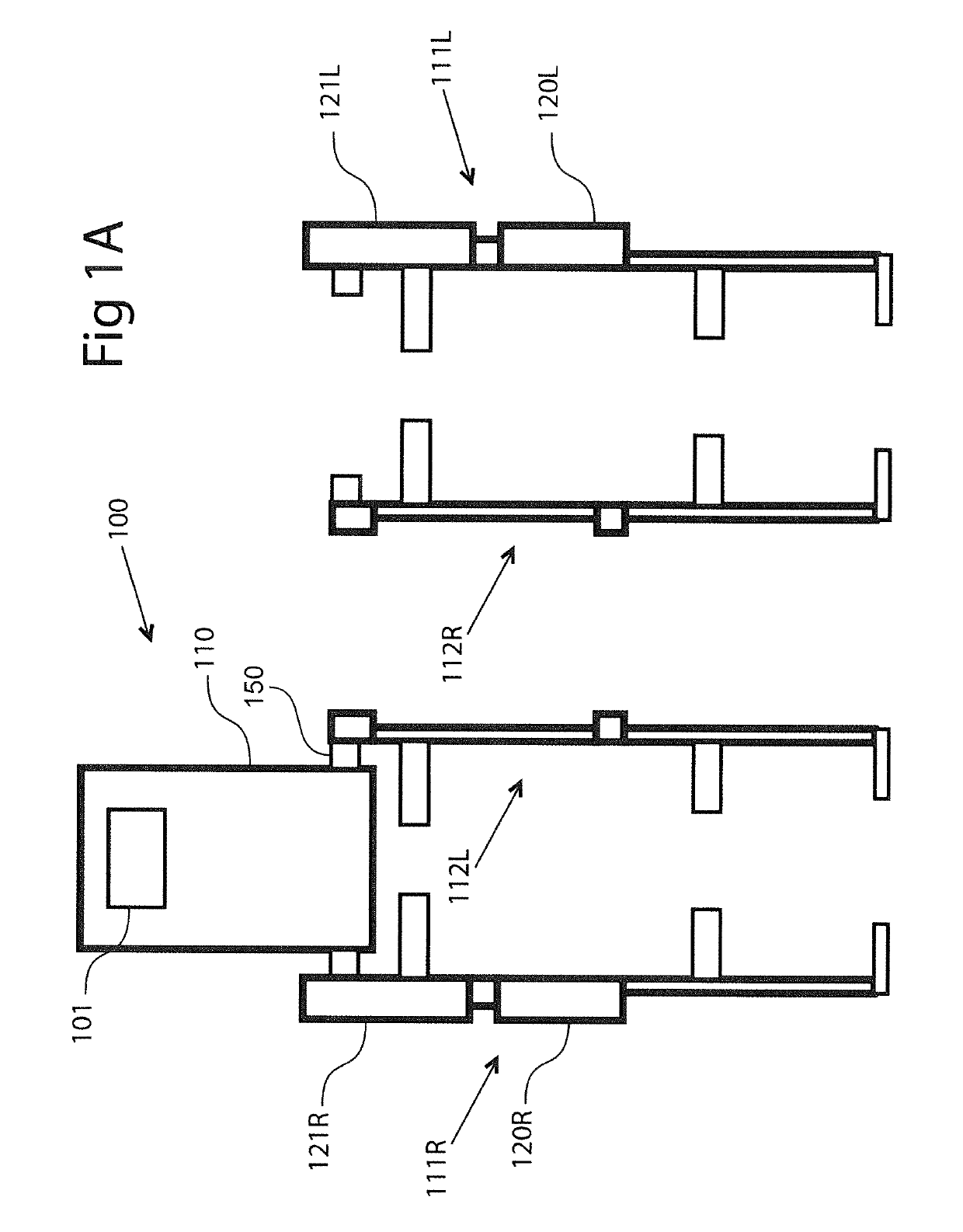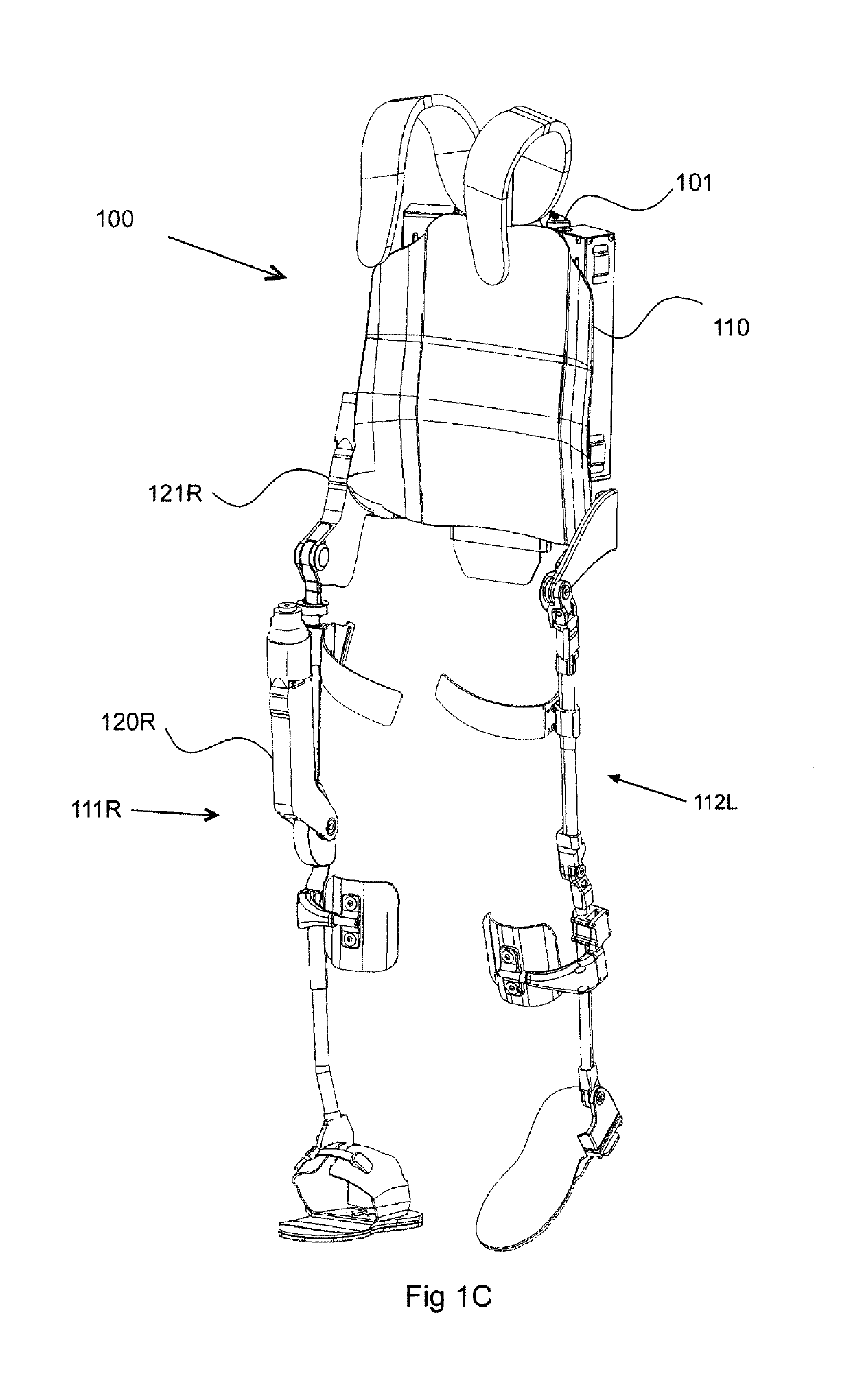Reconfigurable exoskeleton
a technology of exoskeleton and limb, which is applied in the field of powerless lower extremity exoskeleton, can solve the problems of reducing the number of people with impaired lower extremity function
- Summary
- Abstract
- Description
- Claims
- Application Information
AI Technical Summary
Benefits of technology
Problems solved by technology
Method used
Image
Examples
Embodiment Construction
[0024]Extensive testing performed with stroke patients done under a human subject protocol suggested that stroke patients with a chronic injury can benefit from an exoskeleton where the legs may be swapped so that only one side of the exoskeleton is actuated. This knowledge led to a first category of modular systems incorporating torque modifiers in accordance with the invention as will now be described. In general, the first embodiment allows a single exoskeleton to enable paraplegics to walk and aid in the gait training of stroke patients. These two populations are best served by different configurations of an exoskeleton device. A complete paraplegic may lack any muscular control below a certain level; in this case each degree of freedom of the person must be controlled—either with a motor, a passive element such as a spring or a damper, or by simply locking the degree of freedom altogether. Conversely, a stroke patient may have a less affected side with almost normal muscular co...
PUM
 Login to View More
Login to View More Abstract
Description
Claims
Application Information
 Login to View More
Login to View More - R&D
- Intellectual Property
- Life Sciences
- Materials
- Tech Scout
- Unparalleled Data Quality
- Higher Quality Content
- 60% Fewer Hallucinations
Browse by: Latest US Patents, China's latest patents, Technical Efficacy Thesaurus, Application Domain, Technology Topic, Popular Technical Reports.
© 2025 PatSnap. All rights reserved.Legal|Privacy policy|Modern Slavery Act Transparency Statement|Sitemap|About US| Contact US: help@patsnap.com



